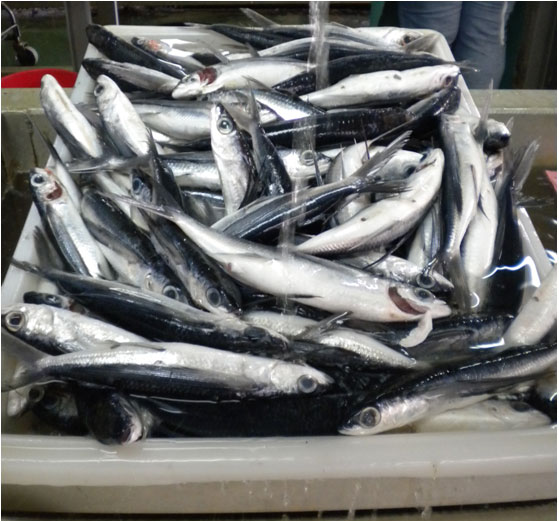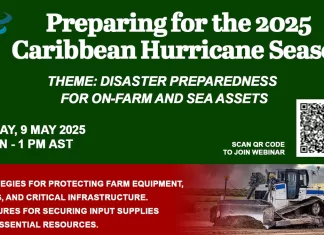![]()

BELIZE: Special emphasis directed at flyingfish fishery in the Eastern Caribbean
Belize City, Belize, 22 April 2016 (CRFM)—The Caribbean Regional Fisheries Mechanism (CRFM) this week sealed an agreement with a UN agency to strengthen governance arrangements for the flyingfish fishery in the Caribbean, with special emphasis on maximizing the long-term potential of the fishery, which employs several thousands in the region and feeds many more.
Milton Haughton, Executive Director of the CRFM, signed the Memorandum of Agreement for Caribbean States; while Kirk Bayabos, Senior Cluster Manager, signed on behalf of the project executing agency, United Nations Office for Project Services (UNOPS), a subsidiary of the UN.
The agreement is under a 5-year umbrella project, the UNDP/GEF Catalysing Implementation of the Strategic Action Programme for the Sustainable Management of shared Living Marine Resources in the Caribbean and North Brazil Shelf Large Marine Ecosystems (CLME+) Project, designed to catalyze the implementation of a 10-year Strategic Action Programme (SAP), focused on the sustainable management of shared living marine resources harnessed from the large marine ecosystems in both the Caribbean and the North Brazil Shelf. The SAP was endorsed by the ministers of CARICOM responsible for fisheries and/or environment in 2014.
The Caribbean Sea is described as a semi-enclosed sea adjacent to the Atlantic Ocean, south to the Gulf of Mexico. It is one of the largest salt water seas with a diverse marine life that is fundamental to the livelihoods of coastal communities, project documents detail.
It is within this expansive marine space—spanning more than a million square miles—that the flyingfish, a species of fish which has a life-span of less than one year, but which spawns as many as 7,000 eggs several times between November and July, is known to thrive in a zone spanning from Dominica to Trinidad and Tobago.
The wider area known as the Caribbean and North Brazil Shelf Large Marine Ecosystems (jointly called “CLME+”) is bordered by 35 states and territories, including the 17 CRFM Member States.
Due to its vast socio-economic value, the CLME+ buttresses two of the region’s economic pillars: tourism and fisheries. However, these ecosystems are today being adversely impacted by pollution, habitat degradation and unsustainable fisheries and fishing practices. The 10-year SAP created under a forerunner CLME Project is aimed at tackling those threats, while also combating the threats which climate change poses to sustainable fisheries.
In March 2015, a US$ 12.5 million grant was released by the GEF to support the execution of a 5-year project (the CLME+ Project), to advance the implementation of the SAP. The CLME+ Project is being implemented by the Project Coordinating Unit in Cartagena, Colombia in collaboration with a number of regional partners.
In January 2016, three Regional Fisheries Bodies, the CRFM, the Central American Fisheries and Aquaculture Organization (Organización del Sector Pesquero y Acuícola del Istmo Centroamericano, OSPESCA), and the Food and Agricultural Organisation of the United Nations – Western Central Atlantic Fisheries Commission (FAO-WECAFC) signed a fisheries agreement, to improve their coordination under the CLME+ project through an interim coordination mechanism. The work being undertaken to improve the Caribbean flyingfish fishery will test the effectiveness of this region-wide mechanism.
The parties to this week’s accord—the CRFM and UNOPS—will work together over the next four years to implement a CLME+ project funded by the United Nations Development Program/Global Environment Facility (UNDP/GEF). The Caribbean sub-component is expected to wrap up in August 2019.





